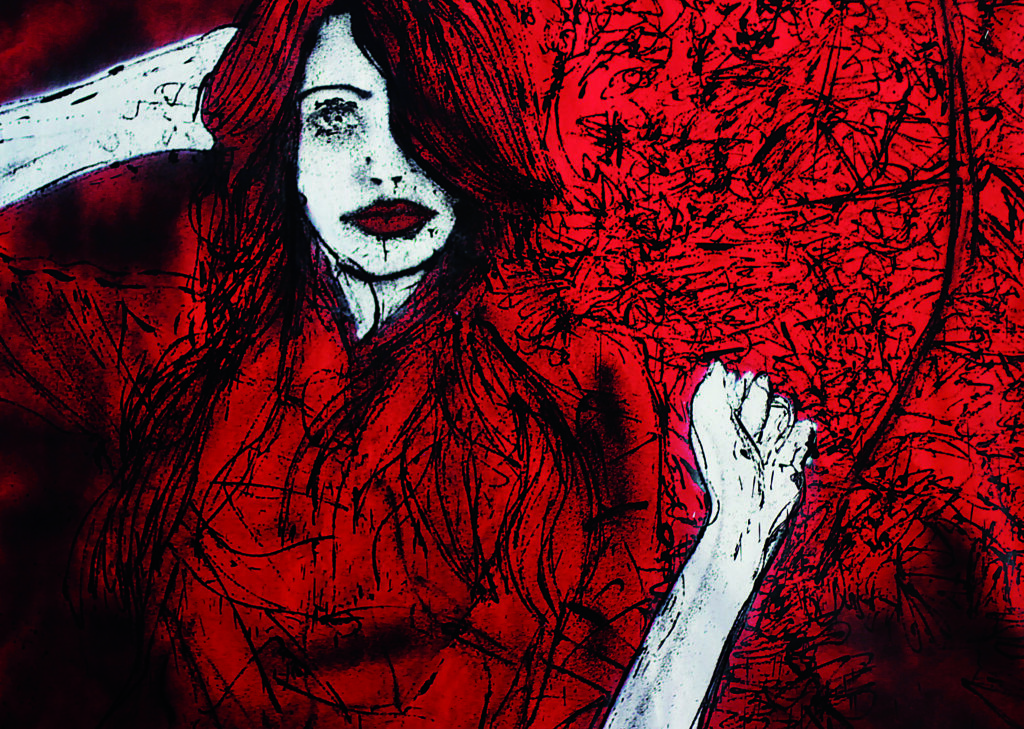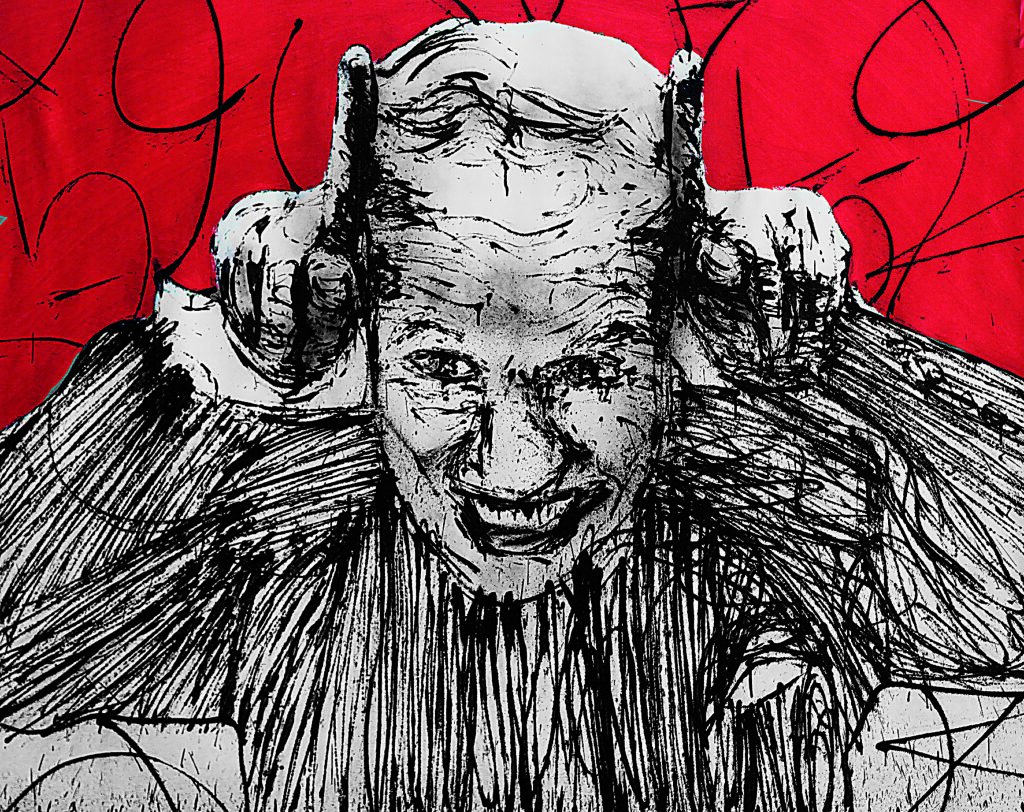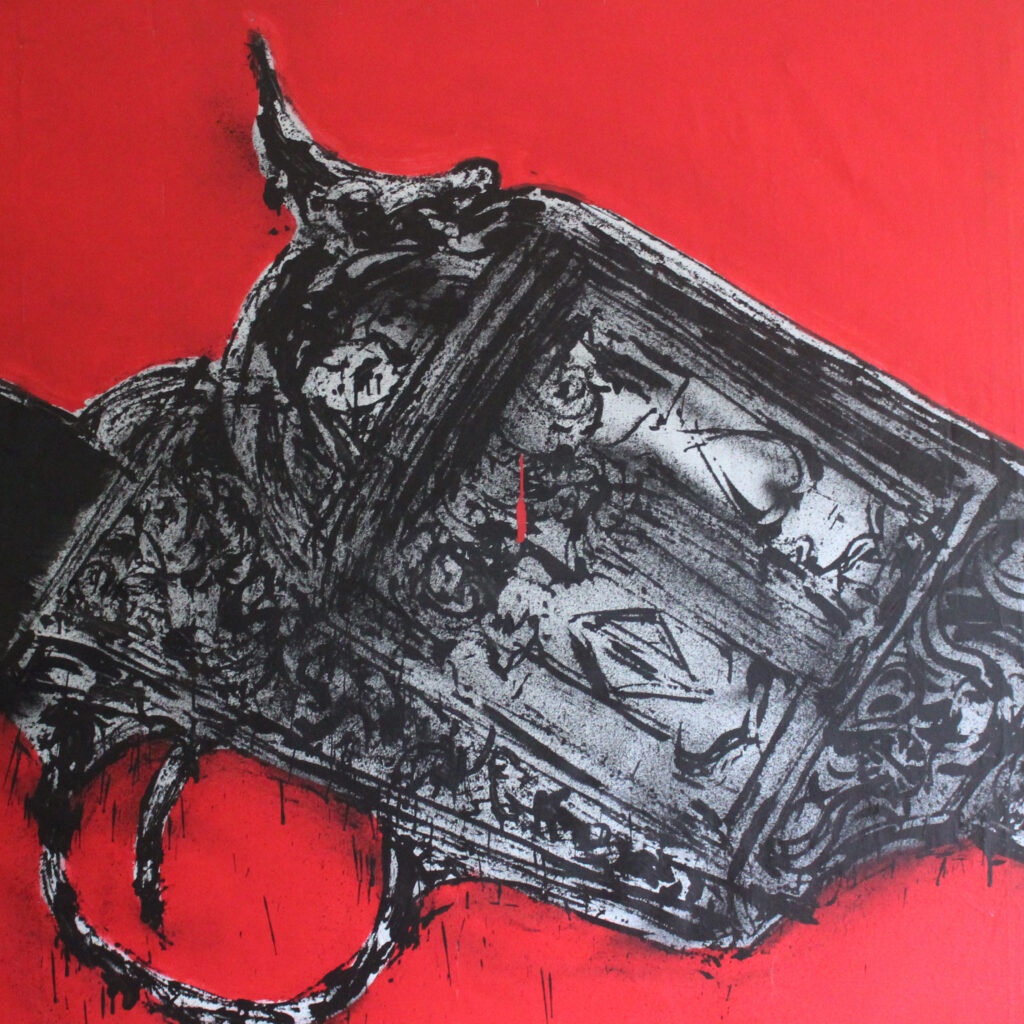2015 l Particles Evolution
This series features trichromes of black, white, and red, known for their striking visual impact. Red, with the longest wavelengths in the visible spectrum, reaches the retina first, inciting excitement and spontaneity. Edward Bernays, in his book Propaganda, identified this combination as ideal for public mobilization, stating that art and politics must connect with the public by understanding and using the anatomy of opinion.
Color influences behavior by prompting unconscious brain actions and hormonal releases. This raises a crucial question: Is the history of art a history of propaganda by victorious civilizations, or do images serve to physically influence the public?
Historically, the strategic use of black, white, and red has been powerful, from ancient empires to modern marketing campaigns. Red evokes strong emotions due to its physiological impact, while black and white provide stark contrasts that enhance red’s intensity.
Bernays, the father of public relations, highlighted how these colors can captivate and mobilize masses. His insights into the psychological effects of colors have been used in political propaganda and advertising, demonstrating their effectiveness in shaping public perception and behavior.
By exploring the deliberate use of these colors in art, this series challenges us to reconsider visual art’s role as a tool for persuasion and control. Are daily images part of a broader strategy to influence our thoughts and actions? This series provokes thought and discussion on the true power and purpose of art in human history.





